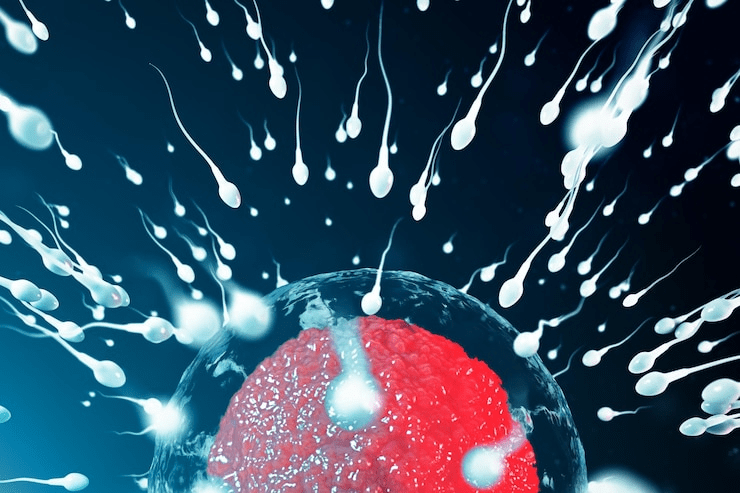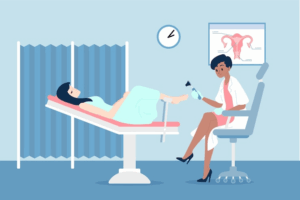Introduction
Can Azoospermia Be Temporary? Infertility can be a challenging journey for many couples, and when a man is diagnosed with azoospermia, the experience can be even more overwhelming. Azoospermia is a condition where no sperm is found in a man’s ejaculate, making natural conception impossible without medical intervention.
But an important and hopeful question many men ask is: Can azoospermia be temporary? The answer isn’t always straightforward. In some cases, yes—it can be temporary and treatable, depending on the underlying cause.
This article explores everything you need to know about azoospermia, its types, causes, diagnosis, and most importantly, when it may be a temporary condition and what can be done about it.
What Is Azoospermia?
Azoospermia is a medical condition characterized by the absence of sperm in the ejaculate. It affects approximately 1% of all men and is responsible for about 10-15% of male infertility cases.
There are two main types of azoospermia:
-
Obstructive Azoospermia (OA): Sperm is produced in the testicles but is blocked from being ejaculated due to an obstruction in the reproductive tract.
-
Non-Obstructive Azoospermia (NOA): Sperm is not being produced at all or in very low amounts due to testicular dysfunction or hormonal issues.
Understanding which type of azoospermia a man has is essential in determining whether the condition might be temporary or permanent.
Can Azoospermia Be Temporary?
This is a common concern among men who receive this diagnosis. And rightly so—azoospermia sounds like a final verdict, but the truth is more nuanced.
The short answer is: Yes, azoospermia can be temporary, but this depends on the cause and the type of azoospermia.
Let’s break it down.
Temporary vs. Permanent Azoospermia
To understand if azoospermia is reversible or temporary, we need to look at its causes.
Temporary Azoospermia: This form can often be reversed with treatment or lifestyle changes. It’s more common when the cause is:
-
Hormonal imbalances
-
Infections
-
High fever or illness
-
Medication side effects
-
Heat exposure (e.g., hot tubs, laptops)
-
Varicocele (enlarged veins in the scrotum)
-
Lifestyle factors (smoking, alcohol, stress)
-
Blockages that can be surgically repaired
Permanent Azoospermia: In cases where the testes are severely damaged or genetically unable to produce sperm, azoospermia may be irreversible. Common causes include:
-
Genetic disorders (e.g., Klinefelter syndrome)
-
Severe testicular injury
-
Radiation or chemotherapy
-
Testicular atrophy
Causes of Temporary Azoospermia
Let’s dive deeper into common reversible causes of azoospermia:
1. Hormonal Imbalances
Sperm production relies on a delicate balance of hormones, particularly testosterone, follicle-stimulating hormone (FSH), and luteinizing hormone (LH). Any disruption can lead to reduced or halted sperm production.
Examples:
-
Low testosterone levels
-
Elevated prolactin levels (hyperprolactinemia)
-
Thyroid disorders
Treatment: Hormone therapy, lifestyle adjustments, or medication can help restore balance and sperm production.
2. Medications and Drug Use
Some medications can interfere with sperm production:
-
Anabolic steroids
-
Chemotherapy drugs
-
Anti-depressants
-
Certain antibiotics
-
Anti-androgens
Can azoospermia be temporary if caused by medications? Yes—once the medication is stopped and the body recovers, sperm production often resumes over time.
3. Infections or Inflammation
Infections like epididymitis or sexually transmitted diseases (STDs) can block sperm flow or cause inflammation that damages sperm-producing tissues.
Treatment: Antibiotics, anti-inflammatory medication, and early treatment can restore fertility.
4. Fever and Illness
A high fever, especially for extended periods, can reduce sperm production. Since sperm takes around 74 days to mature, any disturbance in that cycle may temporarily halt production.
Good news: This type of azoospermia is often self-resolving within a few months after the illness subsides.
5. Heat Exposure
The testicles need to stay cooler than the rest of the body to produce sperm. Frequent exposure to high temperatures can reduce or stop sperm production temporarily.
Common sources of heat exposure:
-
Saunas and hot tubs
-
Tight clothing
-
Laptop use on the lap
-
Prolonged cycling
Reducing heat exposure can reverse the effects over time.
6. Lifestyle Factors
Obesity, smoking, alcohol, recreational drugs, and chronic stress can reduce sperm count and even lead to temporary azoospermia.
Reversibility: Yes—with lifestyle changes and proper medical guidance, sperm production can often return to normal.
Diagnosing Azoospermia: How Do You Know If It’s Temporary?
Before jumping to conclusions, a comprehensive diagnosis is required. Here’s how doctors determine whether your azoospermia might be temporary:
1. Semen Analysis
The first step is analyzing the semen sample to confirm azoospermia. Sometimes, sperm may be present in small numbers but missed in the first test. That’s why at least two semen analyses are recommended, 2–3 weeks apart.
2. Hormone Testing
Doctors will check levels of testosterone, FSH, LH, and prolactin to detect hormonal imbalances.
3. Genetic Testing
Genetic evaluations like karyotyping or Y-chromosome microdeletion analysis can rule out permanent causes like Klinefelter syndrome.
4. Scrotal Ultrasound
Used to detect blockages, varicoceles, or abnormal testicular development.
5. Testicular Biopsy
In non-obstructive azoospermia, a biopsy can determine if sperm is being produced in the testes and simply not being transported out.
Treatments for Temporary Azoospermia
If your doctor determines that your azoospermia is reversible, the treatment will depend on the underlying cause.
1. Hormonal Therapy
-
Clomiphene citrate or hCG injections may boost testosterone and FSH.
-
Useful for men with secondary hypogonadism.
2. Lifestyle Modifications
-
Quit smoking
-
Reduce alcohol
-
Avoid tight underwear and heat exposure
-
Exercise and maintain a healthy BMI
These changes can improve natural sperm production over time.
3. Treating Infections
Antibiotics and anti-inflammatories help clear infections and prevent scarring or blockages.
4. Surgical Options
For obstructive azoospermia, microsurgery can repair blockages or reverse a vasectomy.
5. Discontinuing Harmful Medications
If azoospermia is drug-induced, stopping the medication under medical supervision can lead to recovery in 3–6 months.
Assisted Reproductive Techniques (ART)
Even if sperm is not present in the ejaculate, it may still be retrievable from the testes. This is where Assisted Reproductive Technology comes in.
Techniques include:
-
Testicular Sperm Aspiration (TESA)
-
Percutaneous Epididymal Sperm Aspiration (PESA)
-
Micro-TESE (Microdissection Testicular Sperm Extraction)
Once sperm is retrieved, it can be used in Intracytoplasmic Sperm Injection (ICSI) to fertilize an egg during IVF.
This is especially valuable for men with non-obstructive azoospermia who may have focal areas of sperm production.
Real Stories: When Azoospermia Turned Out to Be Temporary
Case 1: Hormonal Imbalance
A 35-year-old man was diagnosed with azoospermia. Hormonal tests revealed low FSH and testosterone. After 6 months of hormone therapy, sperm began appearing in semen samples. The couple eventually conceived through ICSI.
Case 2: Medication-induced azoospermia
An amateur bodybuilder using anabolic steroids presented with azoospermia. After stopping steroids and receiving hormone therapy, his sperm production resumed within 9 months.
These stories highlight that azoospermia can be temporary and successfully treated with the right approach.
Frequently Asked Questions
Can azoospermia be cured naturally?
In cases due to lifestyle, stress, or heat exposure, azoospermia may be improved with natural methods like diet, exercise, and avoiding heat.
How long does it take to reverse azoospermia?
It depends on the cause. Hormonal or lifestyle-related azoospermia may take 3–12 months to improve, while post-infection or surgical recovery varies case by case.
Can I father a child if I have azoospermia?
Yes. With the help of fertility specialists, sperm retrieval methods, and assisted reproductive techniques, many men with azoospermia become biological fathers.
Conclusion
So, can azoospermia be temporary? Absolutely—in many cases, yes. From hormonal imbalances and lifestyle choices to infections or heat exposure, there are several reversible causes of azoospermia. Early diagnosis, lifestyle modifications, proper treatment, and working with a qualified fertility specialist can significantly improve your chances of recovery and even fatherhood.
If you or someone you know is facing a diagnosis of azoospermia, remember: it’s not the end of the road. Seek help, get tested thoroughly, and explore your options. Modern medicine has made remarkable progress in treating male infertility—and there is hope.





